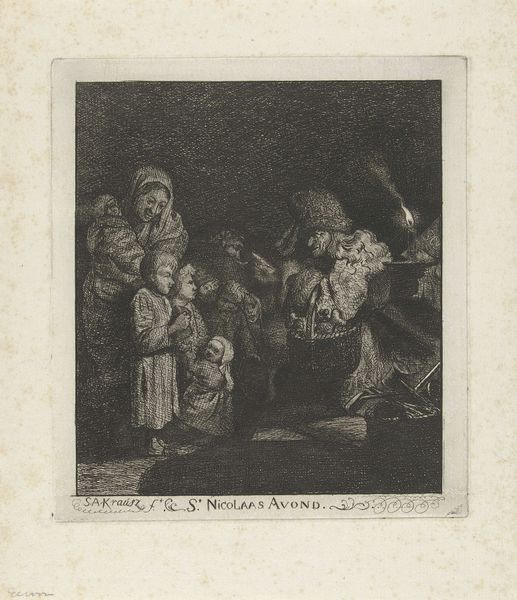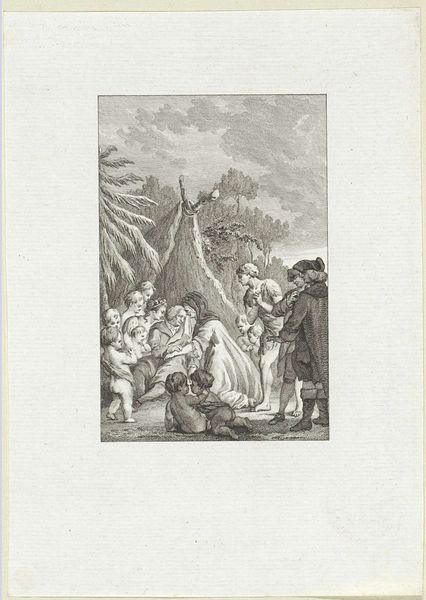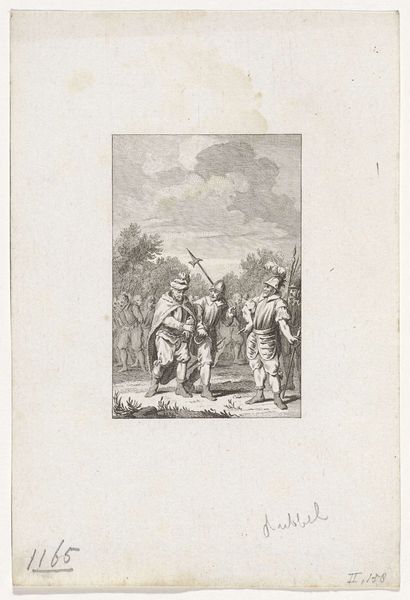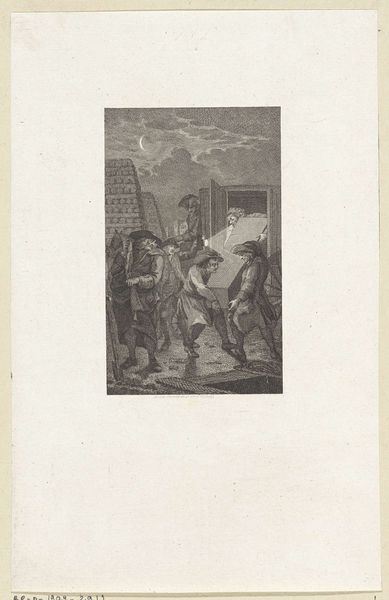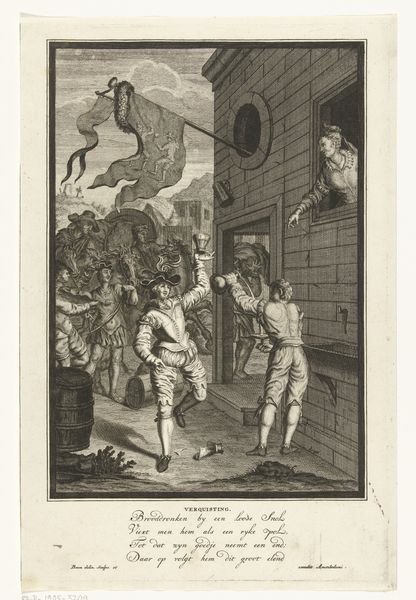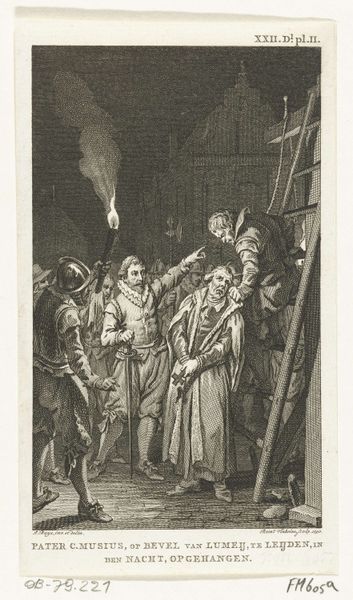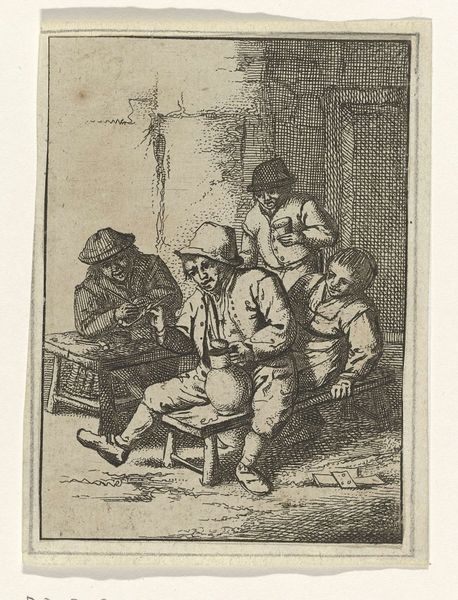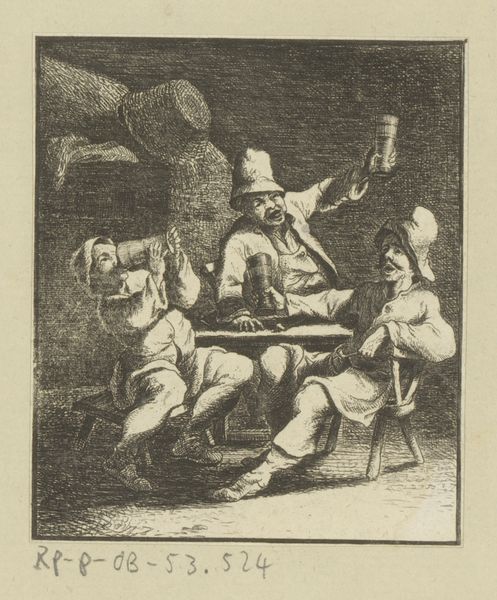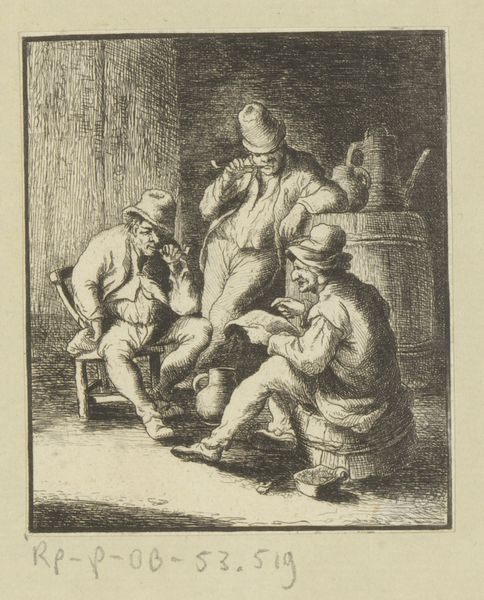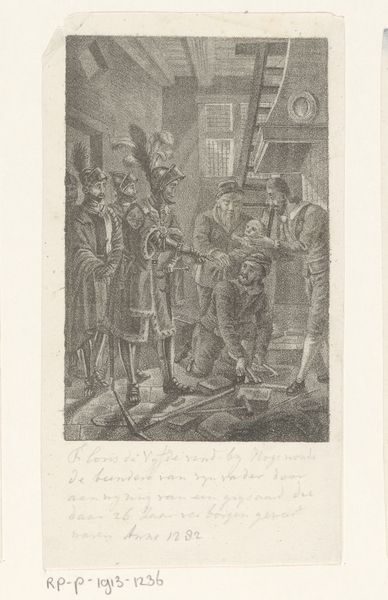
Dimensions: height 96 mm, width 72 mm
Copyright: Rijks Museum: Open Domain
Curator: The atmospheric etching before us is entitled "Three Men by a Bonfire," dating from somewhere between 1739 and 1804, and it is by Johann Andreas Benjamin Nothnagel. Editor: The scene certainly evokes a feeling of tension, or perhaps cautious watchfulness, created through contrasting areas of light and dense shadow. The figures huddled around the fire seem burdened, and on alert. Curator: Notice the composition, how Nothnagel places the bonfire centrally. It not only provides the pictorial illumination but anchors the three figures within its radiant visual field, creating a rather nice play between subject and light source. Semiotically, it draws the eye from the lower-left corner of the firewood carrier up to the expressive figure pointing out into the darkness beyond the perimeter of light, who is the only person engaged, so it implies hierarchy of narrative, don't you think? Editor: Yes, the bonfire's positioning emphasizes the men's isolation and potential vulnerability to threats outside of the light. Genre and history paintings were useful narrative strategies in a politically turbulent time, so maybe it served as a metaphor for broader anxieties around public order? These genre scenes gained popularity alongside sociopolitical issues and were meant to communicate specific societal morals of how things could get "hot". Curator: Precisely. Nothnagel’s use of etching masterfully depicts textures – the rough clothing, the dense smoke, the flames licking upwards, but also a very fine gradation of tonalities through precise line-work in hatching and cross-hatching which really captures a Baroque sentiment of rendering realistic textures. What really sells me are their various facial features that showcase emotion, that show struggle or distress! Editor: Exactly, but it makes you wonder if there was a cultural lens being communicated, through genre depictions and public discourse, to maybe highlight or vilify an experience being represented and made visually accessible for various political and socioeconomic strata. What appears to be as simple as a moment is in truth the politics of representation being displayed at play, wouldn’t you agree? Curator: Ah, indeed. Reflecting on this, it's impressive how the piece encapsulates an emotional and compositional power using such simple yet effective techniques. Editor: Absolutely, this print provides a glimpse into an older period while allowing for interpretations beyond the art itself, shedding light on sociocultural frameworks of the era.
Comments
No comments
Be the first to comment and join the conversation on the ultimate creative platform.
